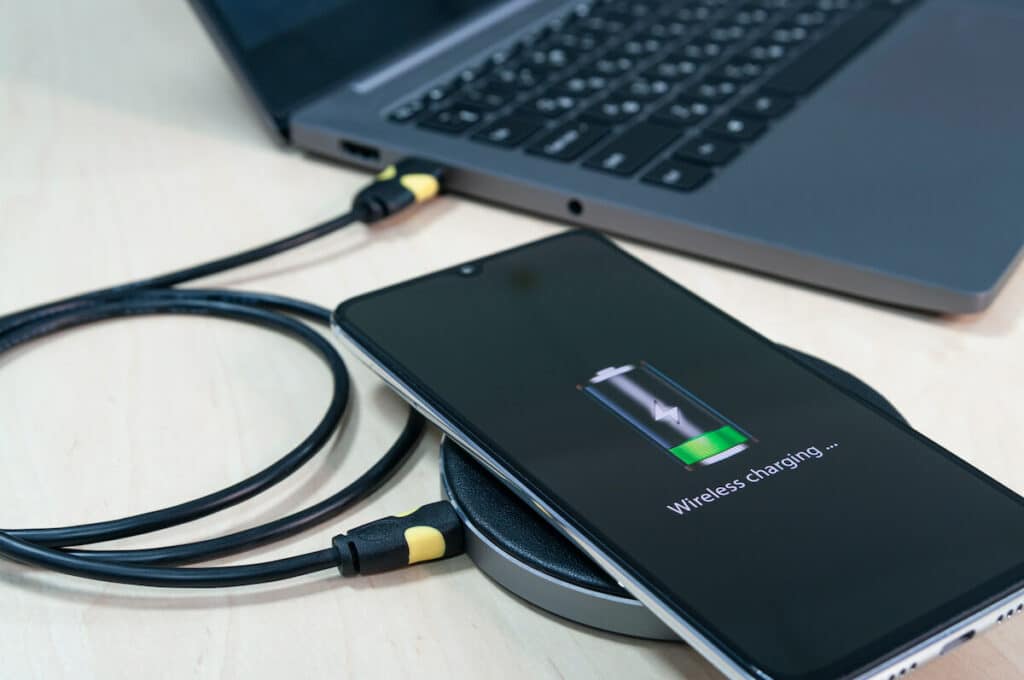You've probably heard of inductive charging stations, also known as wireless chargers. This technology allows you to charge your smartphone, smartwatch or laptop wirelessly. But inductive charging stations are not only practical, they also offer a variety of advantages over conventional chargers. This article is about the technology behind inductive charging stations and the benefits you can gain from using this technology.
Contents
What are inductive charging stations?
Inductive charging stations work on the principle of induction. This creates an electromagnetic field energy that is used to transfer energy between two coils. One Kitchen sink is in the charging station, the other in the device to be charged. The induction creates an electrical voltage in the coil in the device, which is then used to charge the battery of the device.
Benefits
Inductive charging stations offer a number of advantages over conventional chargers. First of all, it's easier to use as you simply place your device on the charging dock instead of plugging it in with a cable. This is particularly useful if you want to charge your device quickly and easily over and over again.
Another advantage is the higher efficiency. Inductive charging stations lose less energy through heat loss, making them more energy efficient than traditional chargers. This means that your device will charge faster and you will be able to use the charged battery longer.
Disadvantages
While inductive charging technology has many advantages, there are also some disadvantages that should be considered. One of the biggest disadvantages is the limited range within which the device can be charged. In order to charge a device inductively, it must be placed in the immediate vicinity of the charging station, as energy cannot be transferred over greater distances.
Another disadvantage is that there are a limited number of devices compatible with this technology. If you have a device that isn't compatible, you'll still need to use a wired charger. The costs of inductive charging stations also tend to be higher compared to conventional chargers.
Another downside is that induction charging isn't as fast as wired charging options, especially when it comes to high-value devices like laptops and electric vehicles.
Finally, as with any technology, there are pros and cons, but the pros tend to outweigh the cons. Inductive charging stations are a practical and energy-efficient technology that can make life easier and will define the future of mobile charging.
Application Areas
Inductive charging stations are suitable for a variety of applications. They are especially useful for mobile devices such as Smartphones, tablets and smartwatches, but also for other devices such as laptops or wireless headphones.
In recent years, inductive charging stations have also become popular Automotive industry gained importance. More and more manufacturers are offering the option of charging the car wirelessly in their new models. This means that you can simply park your car on a special charging station and let the car charge automatically, without having to connect a cable every time.
Inductive charging stations are also being offered more and more often in public spaces such as cafés, airports or train stations. This allows you to easily and conveniently charge your device on the go without having to worry about carrying a charging cable with you.
future prospects
The future of inductive charging looks very promising. Experts expect that the technology will continue to be improved in the future and that it will become established in more and more areas.
An interesting area of application could be the energy supply of household appliances. It is conceivable that in the future refrigerators, washing machines and other devices can be charged without cables. The possibilities of wireless energy transmission over longer distances, for example from solar panels for storage, are being researched more and more.
the essentials in brief
Inductive charging stations are an innovative and promising technology that can make life easier and more convenient. They offer easier handling and higher efficiency compared to conventional chargers. With their numerous areas of application and ever-increasing development, there is no doubt that inductive charging stations will play an increasingly important role in the future.
All in all, inductive charging technology is an advanced and promising technology that can make life easier and more convenient.
So there is no question that the future of mobile charging will be determined by inductive charging stations. So don't hesitate and invest in such a charging station if you haven't already, it will be worth it!
FAQ on the subject of inductive charging stations
Inductive charging stations are suitable for a variety of devices, such as Smartphones, tablets, smartwatches, laptops and wireless headphones. There are also more and more cars that have an inductive charging capability.
No, not all devices are compatible with inductive charging stations. A device must be specifically designed for inductive charging to benefit from this technology.
Wireless charging stations tend to be more expensive than traditional chargers due to the technology used in them. However, there are more and more providers offering cheaper options and it is likely that prices will fall over time.

